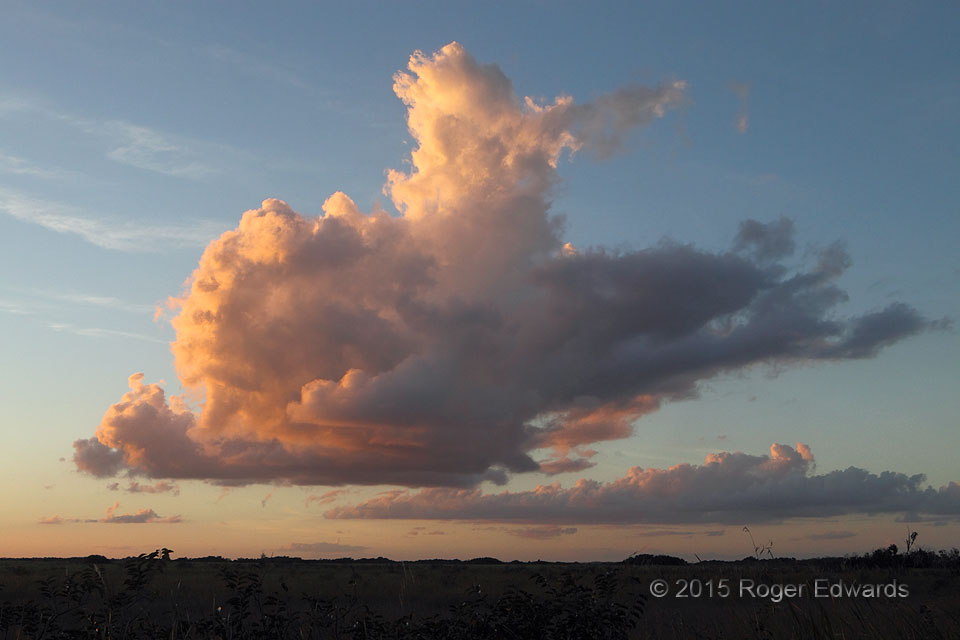
It’s not a fruit, but it’s orange and in Florida! While returning from a trip to the Shark Valley observation area, sunset light brilliantly illuminated a lone towering cumulus. Unlike typical mid-November conditions here, a muggy, maritime/tropical air mass had remained in place well into autumn; indeed we had arrived in southern Florida to more summer-typical daily multicell storms and nocturnal land-breeze convection, along with hordes of mosquitoes and no-see-ums, a week prior. This cloud represented a late gasp of a slowly dying warm season, an autumn turning almost imperceptibly to winter in these parts, a slow transition that had seen only minor, tail-end frontal passages and gradual drying. This was quite unlike the more abrupt passages of a strong polar front that usually shuts down daily Everglades convection for the cool season. The lingering convection added to the nearly endless variety of Everglades sunsets I’ve witnessed.
36 WSW Miami FL (17 Nov 15) Looking NW
25.6853, -80.7669